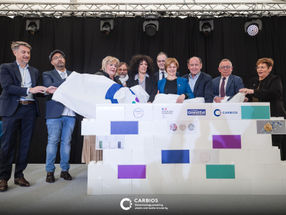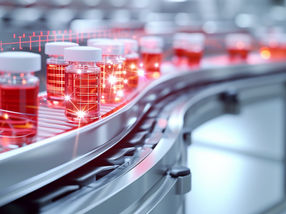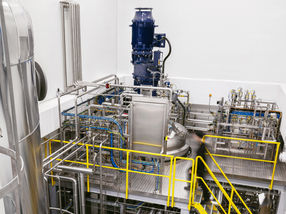Injectable Drug Delivery Market
Ease Of Application And Enhanced Patient-Friendliness Take Precedence
18-Sep-2002
Despite a variety of recent advancements in alternative drug delivery techniques, injectable
delivery systems remain one of the most effective and reliable methods of delivering large
molecule and poorly soluble small molecule drugs in Europe.
It may not match the proportions of the burgeoning market for oral products, but a new study by
Frost & Sullivan (http://www.pharma.frost.com) pegs the growth rate in the European advanced
injectable product market at between 10 and 15 per cent in 2001, making it the fastest growing
segment of the total drug delivery market.
The international marketing consulting company values the global market for advanced injectable
products at around $3.8 million, poised to speed past the $7 billion mark in 2006.
The growing incidence of cancer and other chronic disorders has shifted attention to the
compassionate use of medication and the improvement of patients' quality-of-life issues.
Patients should be made as comfortable as possible by relieving pain and other distressing
symptoms through the application of gentle and safe treatment methods.
"Despite consistent inroads into alternative delivery routes, patients still have to deal with
the pain and inconvenience of intramuscular injections of drugs which are not administered in
any other form. Traditional injectables are often associated with poor compliance, short-term
efficacy, a higher degree of adverse side effects and significant costs due to frequent
dosing," reports Stephanie Maclean, Research Analyst at Frost & Sullivan.
"A glut of drug companies' anti-cancer agents and biotechnology drugs can only be given through
the needle-based channel. Market participants have seized the opportunity to use advanced
delivery techniques in order to augment these drugs' patient-friendliness. Moreover, pegylated
technology is a particularly effective method of providing proteins. This delivery technique is
being applied to a number of compounds, particularly in the area of oncology," Ms Maclean
continues.
There are at least 400 genetically engineered drugs in development, which can only be delivered
via injection at present. In an effort to improve the delivery of their existing products or
new chemical entities, Frost & Sullivan believes that a rising number of biotechnology and
pharmaceutical companies will embark on collaborative projects with drug delivery companies.
Several impending patent expiries will prompt the big pharma and biotech companies to forge
strategic alliance with drug delivery companies to clinch a bigger slice of the overall
injectable drug delivery market.
Concentrated research into the development of novel technologies in the injectable drug
delivery domain has ushered in a new generation of systems, especially in the liposomal/lipid
based and sustained release sector. "Until now, the application of delivery systems has been
restricted to a limited number of therapeutic compounds. The initial burst release associated
with many of the older depots has been avoided or significantly reduced following the
development of advanced technologies," the author remarks.
Profitability in the injectable drug delivery industry is being vigorously sustained by limited
competition from alternative delivery routes. "Physicians are familiar with using injectables
and are likely to be sceptical of the efficacy of certain drugs if given orally or by
inhalation. Oral and inhaleable delivery of proteins, such as insulin, have encountered a
number of set-backs, including concerns over safety. It is unlikely that oral insulin will
appear on the European marketplace during this decade," the study cautions.
Some injectable products incorporating advanced delivery systems are not maximising their full
sales potential due to rising healthcare costs and limited clinical data. Consequently, the
study adds, many physicians still favour conventional therapies.
The high cost of many advanced injectables is slowing uptake of the technology. Products
utilising second generation injectable delivery systems tend to be more expensive due to the
costs associated with the manufacturing processes, R&D expenses, improved efficacy and safety
profiles over competing products, marketing costs, as well as milestone and royalty payments.
Furthermore, physicians are becoming increasingly aware of the need to adhere to their budgets
and are often reluctant to prescribe expensive medicines.
There are approximately 14 drug delivery companies operating in this market. The majority of
these companies are involved in sustained release injectable delivery and tend to offer
multiple technology platforms, such as Atrix laboratories. However, a new wave of drug
delivery companies focused on sustained injectable delivery of proteins and poorly soluble
drugs, including MacroMed and Infimed Therapeutics, have become more prominent.
Sustained Release injectable technologies are the most established form of injectable drug
delivery and consequently boast the most bustling marketplace with key players such as Alkermes
and Atrix Laboratories.
Most of the companies are US-based, with the exception of Debio Research Pharma and Ethypharm.
Competition in the area of sustained injectable delivery is set to intensify due to an influx
of new companies such as MacroMed, which specialise in emerging sustained release delivery
systems. This is expected to give rise to a stream of new business partnerships with the major
pharma and biotech giants.
The Analysis Code "B068" can be purchased from
Frost & Sullivan



























































